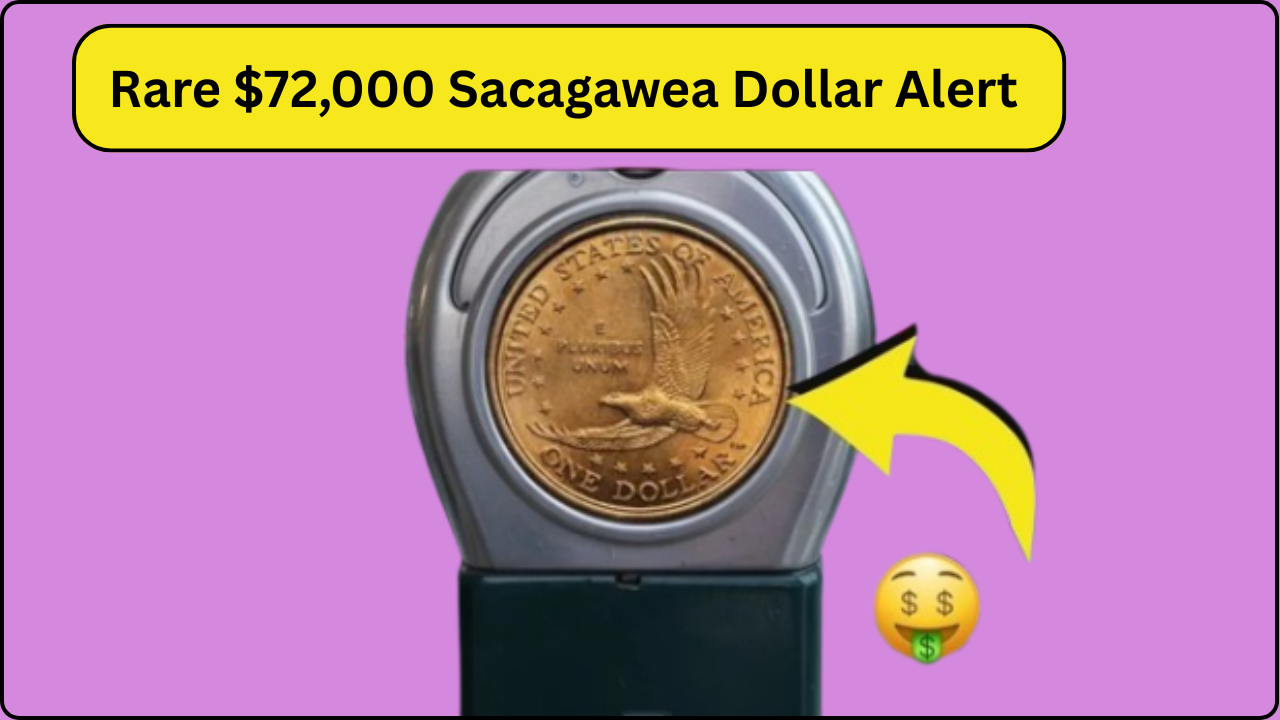Imagine finding a dollar coin in your pocket that’s worth more than a fancy car! The 2000-P Sacagawea Dollar Mule Error Coin is one of those rare treasures that has coin collectors buzzing. This isn’t just any golden dollar—it’s a mistake from the U.S. Mint that can fetch up to $72,000 or more at auction. If you’ve got a 2000-P Sacagawea dollar lying around, it’s time to take a closer look. This article will guide you through what makes this coin so special and how to check if you’ve got one hiding in your change.
What’s a Mule Error Coin?
A mule error happens when the U.S. Mint accidentally uses two dies that don’t belong together. For the 2000-P Sacagawea Dollar, the front (obverse) of a Washington quarter was paired with the back (reverse) of a Sacagawea dollar. The result? A coin that’s gold-colored and dollar-sized but shows George Washington’s face on one side and the Sacagawea dollar’s soaring eagle on the other. This mix-up happened at the Philadelphia Mint in 2000, and only a few dozen of these coins are known to exist, making them super rare and valuable.
Why Is This Coin So Valuable?
The 2000-P Sacagawea Mule Error is a collector’s dream because so few were made—experts estimate only 50 to 100 exist. Some have sold for as much as $150,000, with one even hitting $2.1 million in a private sale! The value comes from its rarity, the unique mistake, and the condition of the coin. Coins in great shape, graded MS66 or higher by services like PCGS or NGC, can fetch the highest prices. Since some of these coins were found in everyday places like bank rolls or vending machines, there’s a small chance one could still be out there waiting to be discovered.
How to Spot the Mule Error Coin
If you have a 2000-P Sacagawea dollar, here’s how to check if it’s the rare mule error:
- Front Design: Look for George Washington’s portrait, like on a quarter, instead of Sacagawea.
- Back Design: The reverse should have the Sacagawea dollar’s eagle with 17 stars around it.
- Mint Mark: Check for a “P” below “IN GOD WE TRUST” on the front, showing it was minted in Philadelphia.
- Edge: The edge should be smooth, like a Sacagawea dollar, not reeded like a quarter.
- Color and Size: It should be golden and the size of a dollar coin (26.5 mm), not a quarter.
| Feature | Normal Sacagawea Dollar | Mule Error Coin |
|---|---|---|
| Front Design | Sacagawea with baby | George Washington |
| Back Design | Soaring eagle with 17 stars | Soaring eagle with 17 stars |
| Mint Mark | “P” on front | “P” on front |
| Edge | Smooth | Smooth |
| Color | Golden | Golden |
What to Do If You Think You Found One
If your coin matches these details, don’t clean it or handle it too much—cleaning can lower its value. Store it in a protective holder and contact a professional grading service like PCGS or NGC to authenticate it. Fake or altered coins exist, so getting it certified is key to confirming its worth. If it’s real, you could be looking at tens of thousands of dollars, depending on its condition. Auction houses or coin dealers can help you sell it, but always work with trusted experts to avoid scams.
A Treasure Hunt in Your Pocket
The 2000-P Sacagawea Dollar Mule Error is more than just a coin—it’s a modern-day treasure hunt. With only a handful known, finding one in your change, coin jar, or old collection could be a life-changing discovery. Stories of these coins popping up in unexpected places, like bank rolls or piggy banks, keep collectors excited. So, next time you see a golden dollar, take a moment to check it. You might just have a $72,000 treasure hiding in plain sight!

